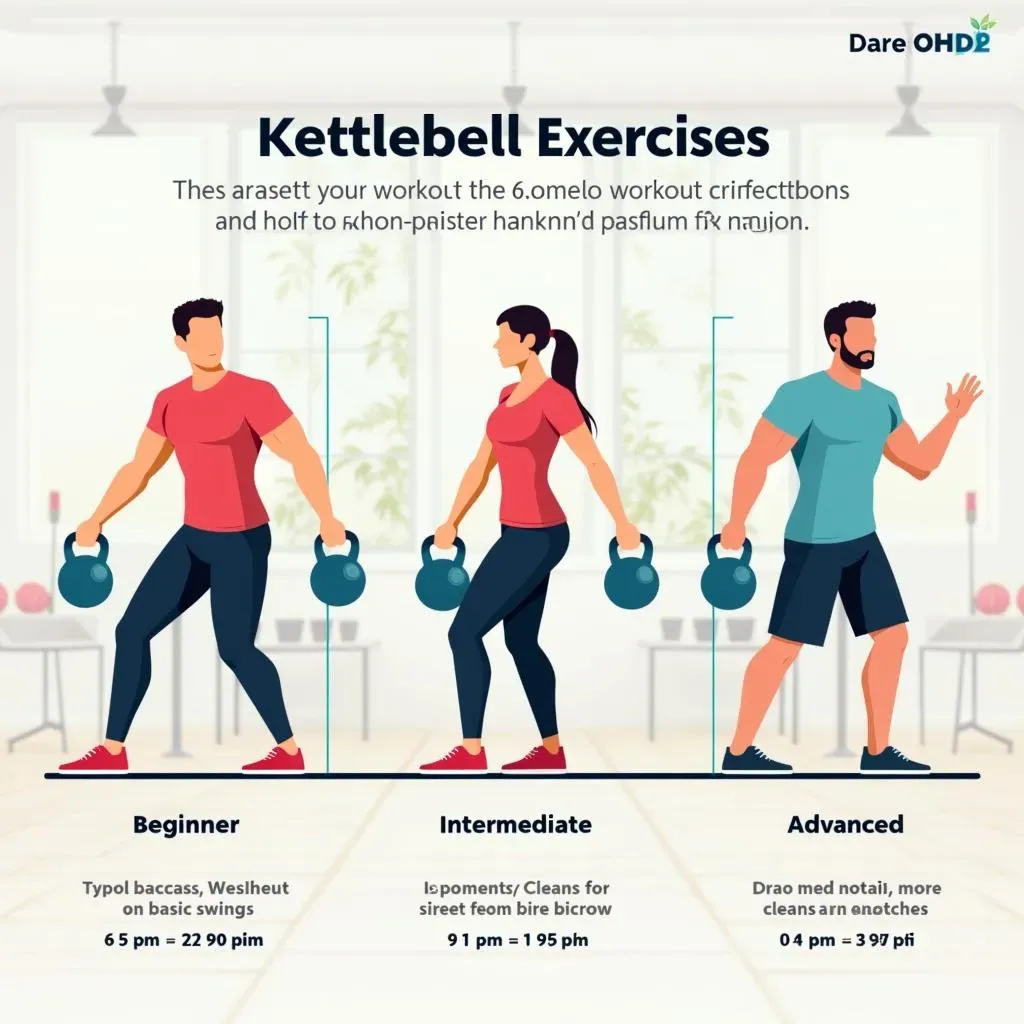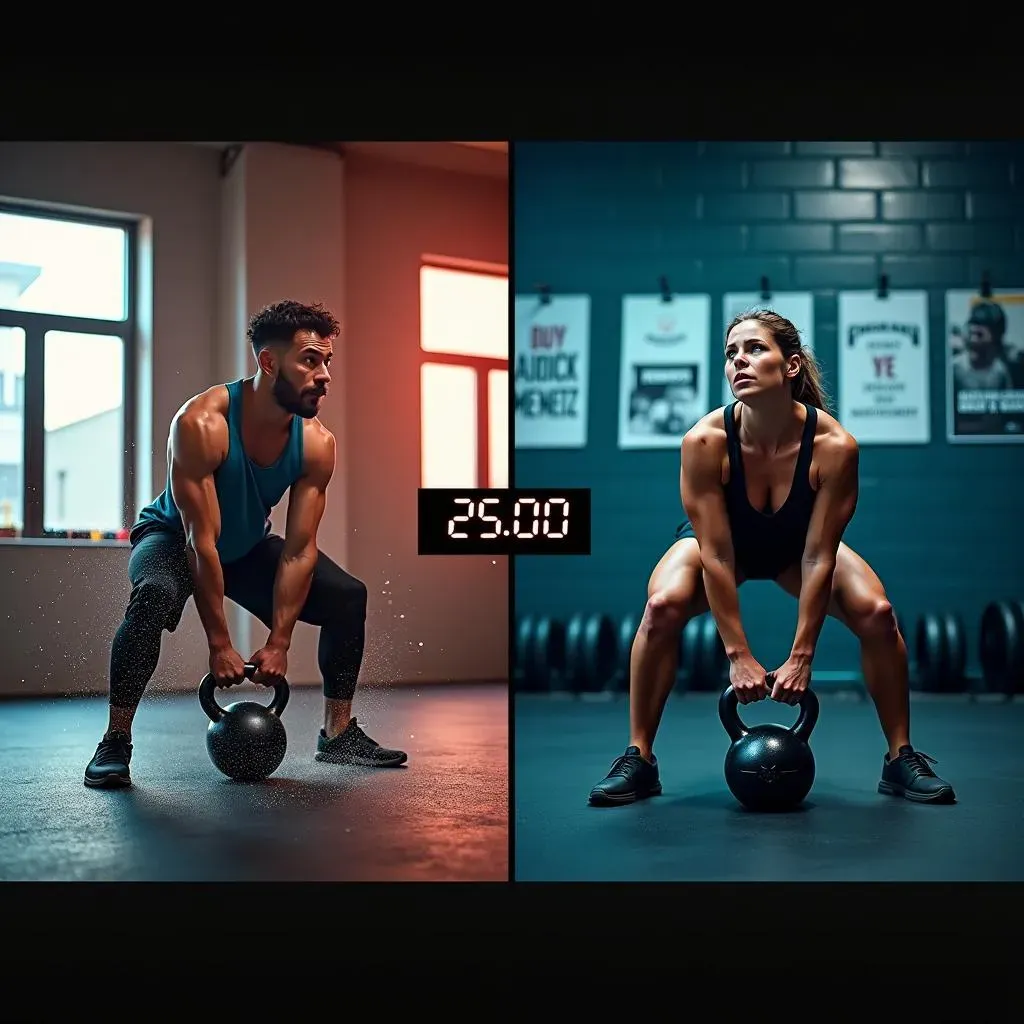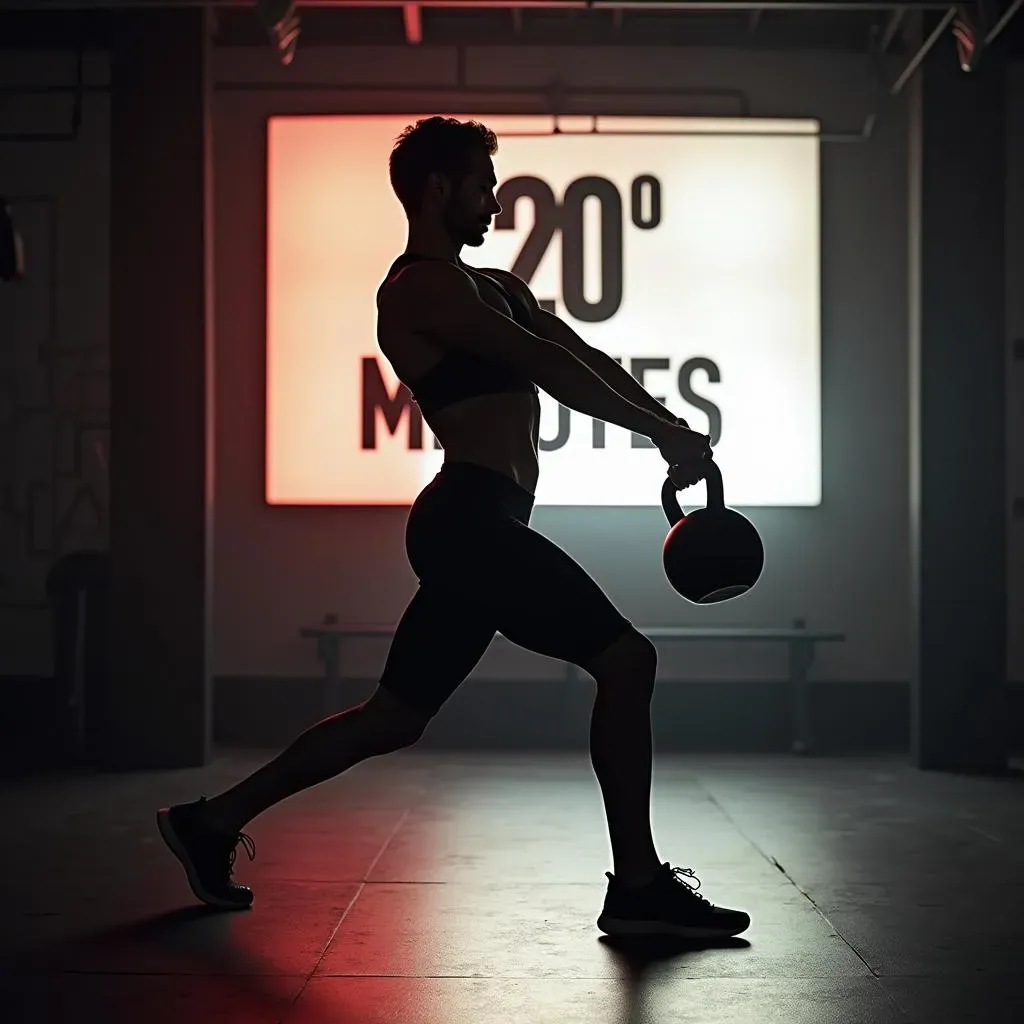Table of Contents
So, you're ready to swing into the world of kettlebells but wondering, "How long should a kettlebell workout be?" You're not alone! Figuring out the right workout duration is key to seeing results without burning out. Kettlebells are fantastic for building strength, boosting cardio, and improving overall fitness. But with so many exercises and workout styles, knowing where to start can feel overwhelming.
Factors Influencing How Long a Kettlebell Workout Should Be

Factors Influencing How Long a Kettlebell Workout Should Be
Fitness Goals: What Are You Trying to Achieve?
First off, what's your main goal? Are you trying to torch calories, build serious muscle, or simply improve your overall fitness level? Your answer here dictates everything. A fat-loss focused workout might involve shorter, high-intensity intervals with minimal rest. On the flip side, if you're after muscle growth, you'll likely need longer sets with heavier weights and more recovery time between sets. Think of it like this: a sprinter's workout looks way different from a marathon runner's, even though they're both running!
Let's say you're prepping for a Spartan Race. Your kettlebell workouts will probably focus on endurance and functional strength. This means longer durations with moderate weight, hitting exercises that mimic the obstacles you'll face. But if you're after a bigger bench press, you’ll be slinging those kettlebells with lower reps and heavier weight, focusing on power and strength.
Experience Level: Are You a Kettlebell Pro or a Newbie?
Be honest with yourself: are you a seasoned kettlebell veteran or just starting out? If you're new to the game, jumping into an hour-long, high-intensity workout is a recipe for disaster (and potential injury). Start slow, focusing on mastering the fundamental movements like the swing, clean, and snatch. Shorter, more frequent sessions are your friend. Think 15-20 minutes, 2-3 times a week. This allows your body to adapt and build a solid foundation.
On the other hand, if you've been slinging kettlebells for years, you can likely handle longer, more challenging workouts. You can push the intensity, increase the weight, and experiment with more complex exercises. Just remember to listen to your body and avoid overtraining. Even the most experienced kettlebellers need rest and recovery!
Experience Level | Workout Duration | Frequency | Focus |
|---|---|---|---|
Beginner | 15-20 minutes | 2-3 times per week | Mastering Fundamentals |
Intermediate | 30-45 minutes | 3-4 times per week | Increasing Intensity & Volume |
Advanced | 45-60+ minutes | 4-5 times per week | Complex Movements & Peak Performance |
Sample Kettlebell Workout Durations for Different Goals

Sample Kettlebell Workout Durations for Different Goals
Fat Loss: Short, Sweet, and Intense
Alright, so you want to melt some fat with kettlebells? Great choice! For fat loss, think high-intensity interval training (HIIT). This means short bursts of intense exercise followed by brief recovery periods. A typical fat loss kettlebell workout might last 20-30 minutes, focusing on exercises that get your heart rate soaring, like kettlebell swings, snatches, and burpees. The goal is to maximize calorie burn in a minimal amount of time.
For example, you could do 30 seconds of kettlebell swings, followed by 15 seconds of rest. Repeat that for 10 rounds, then move on to another exercise. Keep the rest periods short and the intensity high. Trust me, you'll be dripping sweat in no time!
Muscle Gain: Focus on Strength and Volume
If building muscle is your priority, you'll need to adjust your approach. Muscle growth requires more time under tension and heavier loads. A muscle-building kettlebell workout might last 30-45 minutes, with a focus on compound exercises like squats, lunges, presses, and rows. You'll want to use a weight that challenges you for 8-12 repetitions, and allow for longer rest periods (60-90 seconds) between sets.
Think about incorporating variations like goblet squats, single-leg deadlifts, and overhead presses. These exercises target multiple muscle groups simultaneously, promoting overall strength and hypertrophy. Don't be afraid to experiment with different rep ranges and set variations to find what works best for your body.
Designing Your Ideal Kettlebell Workout Length

Designing Your Ideal Kettlebell Workout Length
so now we get to the fun part: crafting your own perfect kettlebell workout length! This isn't about following some cookie-cutter plan; it's about tailoring your training to your unique needs and preferences. The first step? Take a good, hard look at your schedule. How much time can you realistically dedicate to kettlebell training each week? Be honest! It's better to commit to three 30-minute sessions than to aim for five hour-long workouts that you'll never actually do. Consistency is king, especially when it comes to seeing results.
Next, think about your energy levels. Are you a morning person or a night owl? Schedule your workouts for when you're feeling most energized and motivated. And don't forget to factor in rest and recovery. Overtraining is a surefire way to stall your progress and increase your risk of injury. Aim for at least one or two rest days per week to allow your body to recover and rebuild. Remember, it's during these rest periods that your muscles actually grow stronger!
Is a 20Minute Kettlebell Workout Enough? Benefits and Considerations

Is a 20Minute Kettlebell Workout Enough? Benefits and Considerations
The Power of a Quick Swing
let's be real: life gets busy. Squeezing in an hour-long workout can feel impossible some days. That's where the beauty of a 20-minute kettlebell workout shines. Can you really get results in such a short amount of time? Absolutely! The key is intensity and exercise selection. By focusing on compound movements that engage multiple muscle groups, you can pack a serious punch into a brief workout. Think swings, cleans, snatches, and goblet squats. These exercises are like the superheroes of the kettlebell world, offering maximum bang for your buck.
A well-structured 20-minute kettlebell session can boost your heart rate, burn calories, and build strength – all in the time it takes to watch an episode of your favorite sitcom. Plus, short workouts are often more sustainable in the long run. It's easier to stay consistent when you know you only need to dedicate a small chunk of time each day. And consistency, as we've already established, is the secret sauce to fitness success.
What to Consider Before You Swing
Before you jump into a 20-minute kettlebell blitz, there are a few things to keep in mind. First, proper form is crucial. With limited time, you don't want to waste any reps on sloppy technique. Focus on mastering the fundamental movements before cranking up the intensity. Watch videos, practice in front of a mirror, or even consider working with a qualified kettlebell instructor to ensure you're doing things right. Injury is the enemy of progress, so prioritize safety above all else.
Second, listen to your body. Just because you *can* push yourself to the limit doesn't mean you always *should*. If you're feeling fatigued, sore, or just plain unmotivated, don't hesitate to take a rest day or modify your workout. Remember, fitness is a marathon, not a sprint. It's better to take a step back and recover than to push through and risk injury or burnout. A 20-minute workout can be a fantastic tool, but it's just one piece of the puzzle. Combine it with a healthy diet, adequate sleep, and mindful recovery practices for optimal results.
Benefit | Consideration |
|---|---|
Time-efficient | Proper form is crucial |
Boosts heart rate and burns calories | Listen to your body |
Sustainable and easy to stay consistent | Combine with healthy diet, adequate sleep and mindful recovery |
Maximizing Results: Tips for Effective Kettlebell Training, No Matter the Duration

Maximizing Results: Tips for Effective Kettlebell Training, No Matter the Duration
Alright, you've got the kettlebell, you've got the time (whether it's 20 minutes or an hour), now let's talk about maximizing results. It's not just about swinging the bell around; it's about being smart, consistent, and dialed-in. First up, focus on progressive overload. This means gradually increasing the demands on your body over time. It could be adding weight, increasing reps, shortening rest periods, or trying more challenging exercises. The key is to keep pushing yourself outside of your comfort zone, but do it safely and sustainably.
Next, prioritize proper nutrition and hydration. You can't out-train a bad diet. Fuel your body with whole, unprocessed foods and drink plenty of water. This will not only help you perform better during your workouts but also support recovery and overall health. And finally, don't underestimate the power of rest and recovery. Sleep is when your body repairs and rebuilds muscle tissue. Aim for 7-9 hours of quality sleep each night. Also, consider incorporating active recovery days into your routine, like light stretching, foam rolling, or walking. Your body will thank you for it!
Tip | Description |
|---|---|
Progressive Overload | Gradually increase demands (weight, reps, intensity) |
Proper Nutrition & Hydration | Fuel your body with whole foods and water |
Rest and Recovery | Aim for 7-9 hours of sleep and active recovery days |
Conclusion: Swing Your Way to a Fitter You
Determining how long a kettlebell workout should be is a personal journey, shaped by your individual goals, fitness level, and time constraints. There's no one-size-fits-all answer, but by understanding the factors we've discussed, you can create a kettlebell routine that's both effective and sustainable. Whether you opt for a quick and intense 20-minute blast or a longer, more comprehensive session, the key is consistency and proper form. So, grab your kettlebell, listen to your body, and enjoy the process of building a stronger, healthier you!